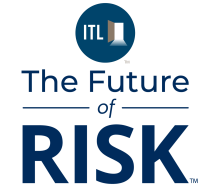In today's rapidly evolving digital landscape, insurers stand at a juncture. The integration of advanced technologies such as artificial intelligence (AI) and the rise of insurtech innovations promise to revolutionize traditional insurance operations. However, the key to unlocking these advancements lies in one foundational shift: robust data modernization.
High-quality, integrated data systems are now essential to an insurer's adaptability and long-term success. Data not only underpins effective AI applications but also forms the backbone of the integration or promise of most insurtech solutions. Without a modern data infrastructure, insurers risk falling behind in a market that increasingly values speed, accuracy, and personalized experiences.
Understanding Data Modernization
What do we mean by data modernization? It is a comprehensive and strategic approach to improving an organization's data architecture. Often, this means moving from outdated legacy systems to advanced, scalable platforms. It involves migrating data storage and processing to cloud-based solutions, integrating disparate data sources across the organization, processes, and third-party providers, and implementing real-time analytics capabilities. The goal is to create a unified, agile data environment that supports informed decision-making and enhances operational efficiency.
The Imperative for Insurers
For the insurance sector, data is the cornerstone of virtually every function—from underwriting and risk assessment to claims processing and customer engagement. Traditionally, insurers have relied on data silos, inconsistent formats, and inefficient processes, which lead to delays and hinder their ability to respond swiftly to market changes and customer demands. Modernizing data systems resolves these issues by ensuring data is accurate, accessible, and actionable.
Enhancing Regulatory Compliance
One of the primary drivers of data modernization is regulatory compliance. The insurance industry operates within a complex regulatory framework that varies across jurisdictions. Maintaining compliance requires meticulous data management and strong reporting capabilities. Modern data platforms facilitate this by providing secure, transparent, and easily auditable data trails. Automated compliance monitoring and reporting tools can be integrated, reducing the risk of non-compliance and associated penalties. Data modernization is essential for insurers navigating the intricate web of local, national, and international regulations.
Operational Efficiency and Cost Reduction
Another major driver is operational efficiency and cost reduction. Outdated data systems often lead to redundant processes and prolonged cycle times. By adopting modern data architectures, insurers can automate routine tasks, streamline workflows, and reduce operational costs. For example, AI-powered analytics can process vast datasets in seconds, providing insights that would take humans significantly longer to derive. This efficiency lowers operational expenses while enabling employees to focus on more strategic activities.
Competitive Advantage: Meeting Evolving Customer Expectations
Today's consumers expect personalized, digital-first interactions. Modern data systems enable insurers to analyze customer behavior and preferences in real time, allowing for customized products and services. This personalization fosters customer loyalty and can be a significant competitive differentiator. Leveraging AI and modern data architectures enables insurers to create intelligent decision-making frameworks that enhance customer experiences.
AI Enablement Through Data Modernization
Artificial intelligence thrives on high-quality, well-structured data. Applications such as predictive analytics, automated underwriting, and fraud detection rely on seamless access to comprehensive datasets. Modern data infrastructures provide the necessary foundation for these AI applications to function effectively. Without such a foundation, AI initiatives may yield inaccurate results or fail to deliver actionable insights. Integrating AI into insurance operations can enhance risk estimation accuracy and drive better pricing strategies.
Building the Data Foundations for AI and Cloud-Native Insurance
As insurers adopt modern platforms like Guidewire Cloud, they're also rethinking how to manage data access and analytics in a more distributed, cloud-native environment. This shift presents an opportunity to streamline reporting and unlock greater agility—but it also requires retooling traditional approaches to data extraction and business intelligence. To accelerate this transition, some insurers are working with consulting partners who offer pre-built frameworks for accessing and organizing cloud-based data, ensuring continuity in analytics while laying the foundation for AI and compliance-ready data environments. Firms with deep expertise in insurance data architecture and governance can help insurers make this leap efficiently and strategically.
Driving Innovation Through Insurtech Partnerships
Data and analytics fuel innovation in insurance. The insurtech landscape is filled with startups offering solutions that can transform various aspects of insurance operations. However, integrating these solutions requires a modern data environment that supports interoperability and scalability. Collaborations between traditional insurers and insurtech firms can lead to the development of new products, improved customer engagement tools, and more efficient claims processing systems. For example, companies like Earnix or hyperexponential deliver AI-based solutions to insurers, enhancing their data analytics capabilities and enabling data-driven decision-making.
Making Quick Progress in Data Modernization
Data modernization is achievable, and insurers can make significant progress quickly with the right approach. By focusing on key areas and working with an experienced consulting partner, organizations can streamline their transformation and see real benefits faster. Here are a few key considerations:
- Start With Strong Data Governance – Implementing clear policies and frameworks ensures data accuracy, security, and compliance from the start. A well-structured governance plan makes future enhancements easier.
- Adopt Scalable, Cloud-Based Technologies – Modern cloud solutions allow insurers to expand their data capabilities as needed, reducing costs and improving flexibility.
- Promote a Data-Driven Culture – Encouraging data literacy and empowering employees to use insights in their daily work helps organizations maximize the value of their data.
- Leverage Expert Support – Partnering with experienced insurtech firms and technology providers can accelerate integration, helping insurers adopt innovative solutions with minimal disruption.
Data modernization is not merely a technological upgrade—it is a strategic imperative for insurers aiming to thrive in the digital age. By overhauling data infrastructures, insurers can enhance regulatory compliance, operational efficiency, and customer satisfaction. Moreover, a modern data foundation is essential for leveraging AI and fostering innovation through insurtech collaborations.
As the industry continues to evolve, those who prioritize data modernization will be well-positioned to lead in a more agile, customer-centric future. With the right strategy and expert support, insurers can unlock opportunities and remain at the forefront of the digital transformation of insurance.









